Cairns for Moray’s Incan engineers
I’ve always liked concentric circles. I don’t really know why. Perhaps it’s a preference I developed during my formative years, spent surrounded by the lingering psychedelic style of the late 1970s. Maybe it’s more about how the shape simultaneously shows both a narrowing and expanding of focus. Or, it’s due to my fondness for Skee-ball.
The Incans too favored concentric circles, though not just for their aesthetic applications. They scooped into the ground at Moray, Peru, covering and stabilizing the sides of the holes with curved walled terraces. During Peru’s rainy season, the Inca’s practical engineering becomes a dramatic scene in green.
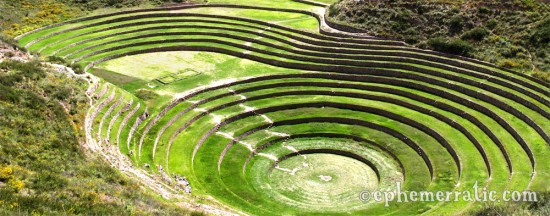
Terraced Incan ruins of Moray
A civilization’s worth of heirloom seeds and an efficient irrigation system found at the ruins have led archaeologists to believe that the terraced depressions were where Incans cultivated new strains of food crops—leading to today’s potato varieties that thrive at every altitude, temperature, soil chemistry, sun exposure, and rainfall.
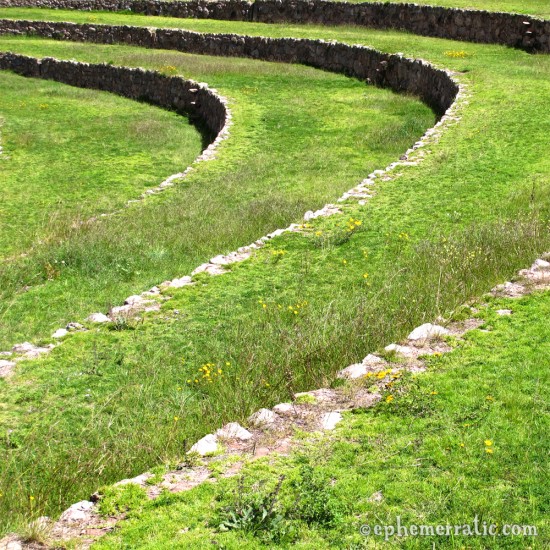
Swooping terrace curves
Even though entrance to the ruins is included in the boleto turistico bought by many of the visitors to Peru’s Sacred Valley, Moray is a bit off the usual tourist path. A worthwhile schlep, it’s a schlep no less.
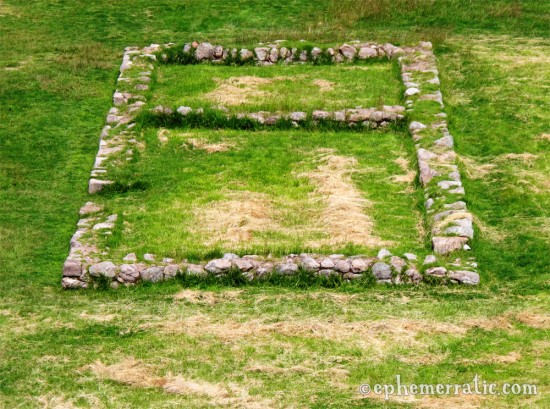
All that remains of an Incan building
Given the high cost of the boleto turistico, we’re surprised to see signs of neglect at Moray. Visitors shamble freely around the site, walking on fragile ancient walls and terraces that more than show their age.
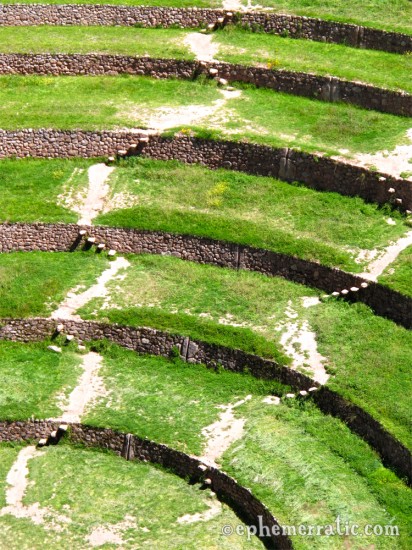
Well-worn foot and irrigation paths at Moray ruins
The only way down from one terrace to the next is by Incan stairs, in which flat stone slabs jut out of the terrace walls. These cause less erosion than a typical staircase design, which may be one of the few things working in Moray’s favor.
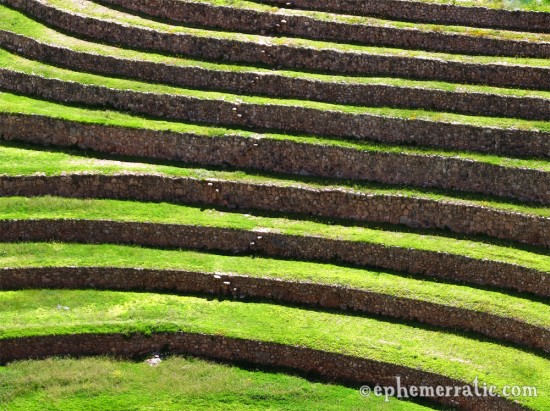
Gently curving walls in shade
One part of the main ruins is more broken than the rest, dirt smeared down the hillside, walls held in place by a few crucifixes of wood. The thin restraints look ready to snap like the sticks cartoon characters use to brace open the hungry mouths of crocodiles.

Fighting unchecked erosion
We walk over to one of Moray’s less visited terraced depressions, where maintenance has become only decorative. Rocks fallen from the crumbled walls sit like grave-marking cairns for Moray’s long-dead Incan engineers. The wildflowers and high grass seem to be the only thing keeping their handiwork from vanishing.
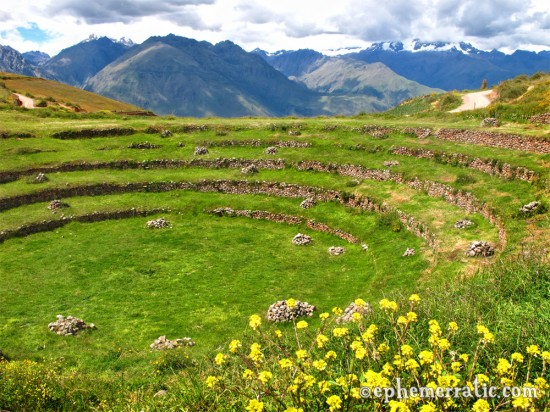
Piles of broken walls in a more decayed terraced area


I remember this was an add on to my trip to Sacred Valley but I chose not to do it. It was rainy season and I didn’t want to be wet.
I know I am such a wimp.
Not wanting to be wet is why we didn’t do the Inca Trail. We were ok being wet occasionally, just not all day and night.
Either neither of us are wimps or we both are. I prefer the former conclusion!